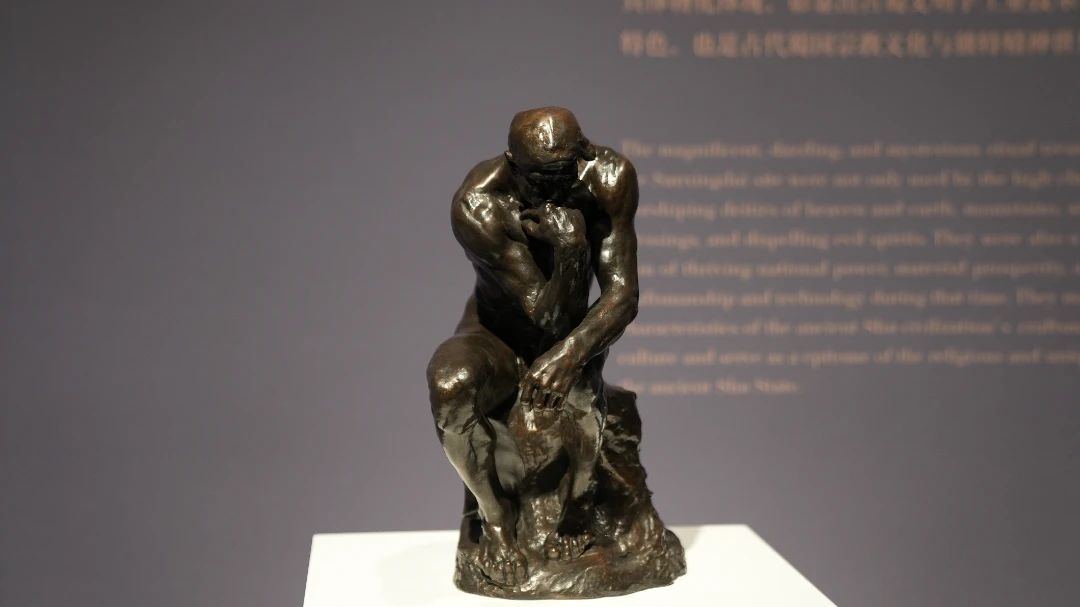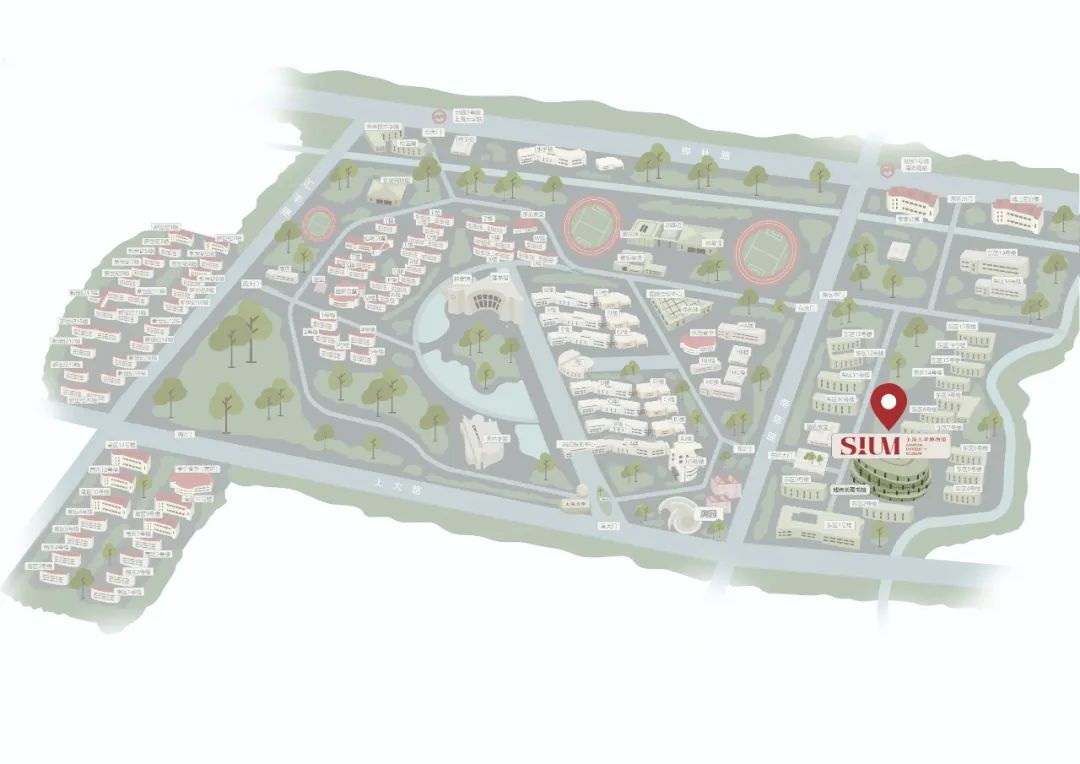
“沉睡三千年,一醒惊天下”的三星堆遗址,是中华文明璀璨星河中明亮而神奇的一颗。
罗丹是“现代雕塑之父”,他的作品中饱含对生命、自然的歌颂、热爱与忧思。
在上海大学博物馆举办的特展——“青铜之光:三星堆与罗丹的超时空对话”展出了许多三星堆、金沙遗址出土文物和罗丹及其同时代雕塑家的作品,让我们一起来详细了解展品背后的故事吧!

· 奥古斯都·罗丹(1840—1917)
· 青铜
· 1904年
· 高34厘米
· Auguste Rodin (1840-1917)
· Bronze
· 1904
· H. 34cm
《思想者》是罗丹最著名的作品之一,也代表了他独特的艺术特征和思想。这座雕塑最初命名为“诗人”,是罗丹为巴黎装饰艺术博物馆的门饰项目所设计的群雕的一部分。其主题灵感来源于诗人但丁的史诗诗歌《神曲》中的“地狱篇”,而罗丹为该群雕命名为《地狱之门》。这个群雕包括了总共186个雕像,每一个代表了该史诗中的一个人物形象。后来,其中的一些雕像被独立出来,包括《思想者》《三个影子》《吻》等。
作为独立出来的雕塑,《思想者》最初的描述是伟大诗人但丁在地狱之门前构思诗句。这一作品采用了现实主义手法来表达人文主义精神。雕塑描绘了一个壮硕的男性形象,他俯身坐在坚硬的岩石上,头低垂,手托着下巴,表现出内心深处的思考和矛盾。这个形象经常被用作代表哲学的形象,同时也被解读为象征了罗丹自己。雕像传达了但丁对地狱中的罪恶和人间的悲剧进行思考,展现了他对人类的同情和珍视,但也隐含着内心的痛苦和强烈的思想冲突。罗丹的作品深刻地反映了人类情感和思考的复杂性,成为19世纪末和20世纪初重要的雕塑风格之一,对后来的艺术家产生了深远的影响。
The Thinker is one of Rodin’s most representative works that embodies his distinctive artistic features and philosophies. Initially named The Poet, this sculpture was originally conceived as part of a group sculpture designed by Rodin for the decorative gate project of the Musée des Arts Décoratifs. The inspiration for the theme of the group sculpture came from the Inferno section of Dante’s epic Divine Comedy. Named The Gates of Hell by Rodin, the group sculpture consists of a total of 186 statues, each representing a different character from the epic. Later on, some of these statues were extracted and showcased independently, including The Thinker, The Three Shades, and The Kiss.
As an independent sculpture, The Thinker was originally conceived as the portrayal of the great poet Dante contemplating his verses before the gates of hell. This artwork utilizes the technique of realism to express the spirit of humanism. The sculpture portrays a muscular male fi gure, seated on a rough rock, leaning forward with his head lowered and chin supported by his hand. This posture captures the essence of deep contemplation and inner confl icts. This image is often used as a representation of philosophy and is also interpreted as a symbol of Rodin himself. The sculpture conveys Dante’s contemplation of the evils in hell and the tragedies in the human world, showing his sympathy and reverence for mankind as well as a sense of inner anguish and intense intellectual confl ict. Rodin’s works profoundly refl ect the complexity of human emotions and thoughts, forming one of the signifi cant sculpture styles in the late 19th and early 20th centuries, which continues to inspire the art world for generations to come.
展览时间:
2023年12月13日至2024年2月1日
展览地点:
上海大学博物馆一层临展厅
(上海市宝山区南陈路333号)
校内师生凭本人一卡通入馆,无需预约。
校外观众采取网上预约方式入馆,扫描下方二维码或关注“上海大学博物馆”微信公众号,点击“个人预约”。

/地址/
上海大学博物馆
(南陈路333号)


